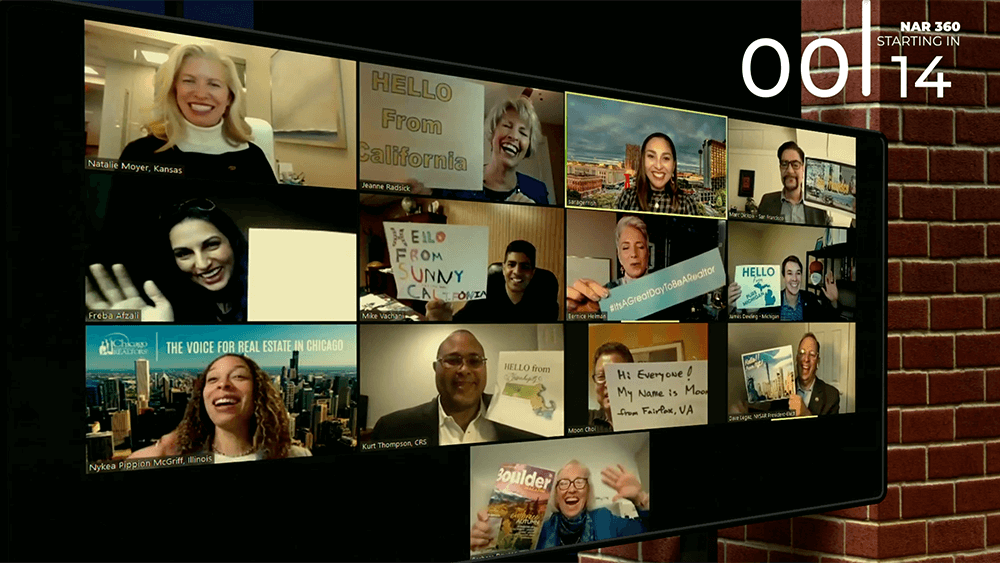
The National Association of Realtors created a “plaza” in Zoom to simulate a walk-in at a face-to-face meeting. The clock in the upper right corner counted down to the start of the event.
As the National Association of Realtors (NAR) prepared for its 2020 annual conference and expo last fall, the organization knew that many members in its audience were craving interaction. It had been a surprisingly strong year financially for plenty of them — real estate prices and transactions around the country surged to record highs in the midst of the pandemic. Despite doing brisk business, Realtors were experiencing the same effects of quarantining as many others around the world during the COVID-19 crisis.
“We had heard quite a bit from our leadership that our members were feeling particularly isolated,” said Bonnie Stetz, director of conference content design at NAR. “Most [of them], by nature, are quite outgoing and used to connecting with people daily. We also know that many enjoy the flexibility of their work, but during the pandemic, their flexibility has also meant that many are taking on additional responsibilities with kids e-learning at home and elder care.”
With that in mind, Stetz and the NAR team knew they needed to prioritize attendee wellness and human connection. In addition to a matchmaking tool that suggested pairings with other attendees with similar interests and an open Zoom room that replicated the casual environment of an expo hall, the program included an element in short supply in 2020: fun. A magician offered a break on opening day, and a book club gave attendees an opportunity to discuss lessons from Glennon Doyle’s Untamed in advance of the author’s closing keynote session. Those events, coupled with activities like a battle of the DJs and an evening bingo contest, aimed to make participants feel more a part of a community.
“It was important to give them every opportunity to not only learn,” Stetz said, “but connect in a material way.”
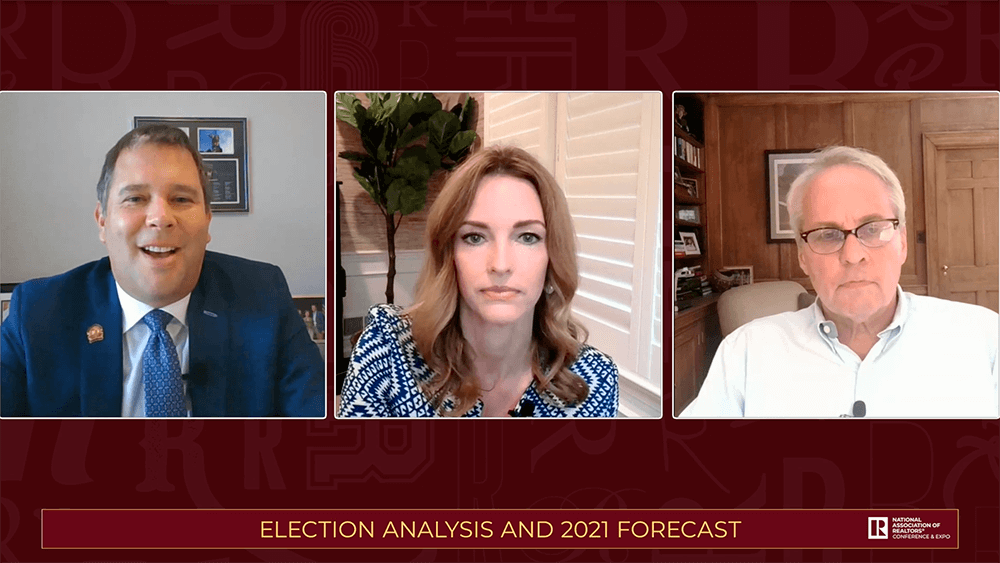
Some of the sessions for the November event could not be prerecorded, like those discussing the election, which were done live.
Balancing Pre-Recording and a Presidential Election
Connecting was critical, but learning opportunities are the foundation of NAR — and the association had no previous experience in creating a digital program. While NAR had streamed a few sessions at past conferences, NAR’s director of production, Jennifer Braun, said that they had never done anything on the scale of an all-digital, three-day experience. The program, which ran from Nov.16–18, included approximately 25-30 education sessions each day — nearly 90 percent of which was pre-recorded.
“The pre-recorded content is fantastic,” said Jake Perkins, the technical director at Projection, NAR’s production partner. “That does take a certain amount of stress level off from the live setting and the things you cannot control live, like an internet connection or the weather.”
While pre-recording reduced the number of issues that could go wrong, it did not sacrifice a critical component that needed to go right: interaction. Even though the vast majority of speakers recorded their presentations long before attendees logged on, some speakers dedicated 15 minutes at the end of the recording to answer questions that were submitted in advance, and other speakers were available while the recording played and responded to attendees live via chat.
The pre-recorded presentations, while professionally produced, were human and authentic. “We did an extremely minimal amount of editing on pre-records and even left some of the little flubs in,” Perkins said. “It was really difficult at times to know what had been pre-recorded and what was live.”
There were some sessions that called for real-time discussions due to one big event taking place outside of the conference that created a challenge for shaping a conversation before the actual program: the presidential election. “What’s the economic outlook now that the election has taken place? And how is that going to affect the real estate market?” Braun asked. “Those were really big topics where we needed to be live.”
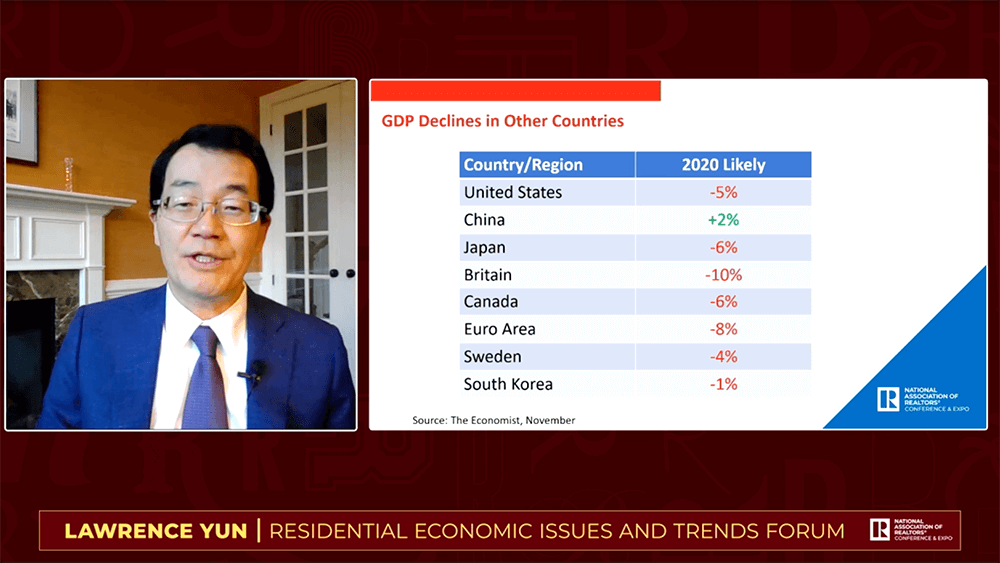
Nearly 90 percent of the education sessions — approximately 25-30 each day of the three-day conference — was pre-recorded.
Managing the Stress of Scheduling
While all that pre-recording eliminated some of the anxiety of potential technical challenges, it came with its own kind of worries. “I remember when we said ‘go’ on this project,” Perkins said. “We looked at the calendar and thought, ‘How do we get all these recordings done before the last day?’”
It wasn’t just about getting them done, either. Each session needed to feel consistent with the other sessions in terms of having similar high-quality lighting, framing, and audio. To achieve that kind of continuity, nearly every speaker who appeared on screen received a recording kit with a webcam, light, microphone, and computer — pre-configured to simplify the workload for presenters. As soon as a speaker turned on the computer, it synced with Projection’s system, allowing Perkins’ team to help them set it up remotely. Speakers received their kits three or four days prior to their scheduled recording, and they also had to schedule a tech set-up appointment.
“We tested that they were connecting to our system and walked them through what it would be like,” Perkins said. “Then, we could maximize the time spent doing their actual recording.”
The tech set-up proved to be particularly important in managing sessions with three or four speakers since coordinating that many schedules can be impossible. Braun’s team did the work of getting everyone to commit to a date and time, and Perkins’ team handled the rest of the details of Zoom links and calendar invitations.
“It felt like a whole different level of organization than it takes to plan an in-person event,” Braun said. “The details are so key. If you miss one detail, you can’t record, and you can’t put the pieces together.”
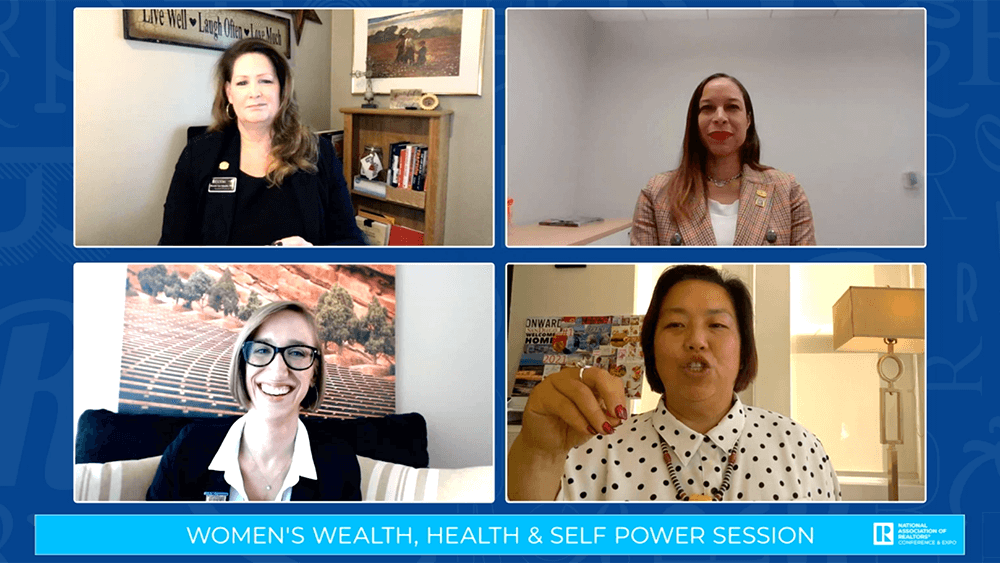
Pre-event tech set-up appointments with speakers was especially important for sessions involving more than one presenter.
Using Digital to Design Better Face-to-Face Events
Those pieces, though, came together quite well. In fact, post-event evaluations for education sessions actually increased from their scores in 2019 and 2018, a reflection of new opportunities that emerged from a lack of face-to-face requirements.
“2020 really gave us an opportunity to rethink our content strategy,” Stetz said. “In the past, physical space considerations and our traditional schedule had caused us to dilute [the] attendee experience. This year, we were able to streamline the content to include the most relevant [topics] and spend considerable time deciding on the best format — [a traditional session], Q&A, or content-based networking roundtable for each topic.”
Stetz also believes that the virtual environment offered greater access to thought leaders, and the online question capabilities were more convenient than the standard approach at a face-to-face gathering: Find a microphone and stand in line.
And while NAR is looking forward to the return of an in-person conference, the digital component is here to stay. “We’re definitely going to have some sort of hybrid component moving forward,” Braun said. “We’ve had a really great response to it. People who have never been able to participate before were able to be part of it.”
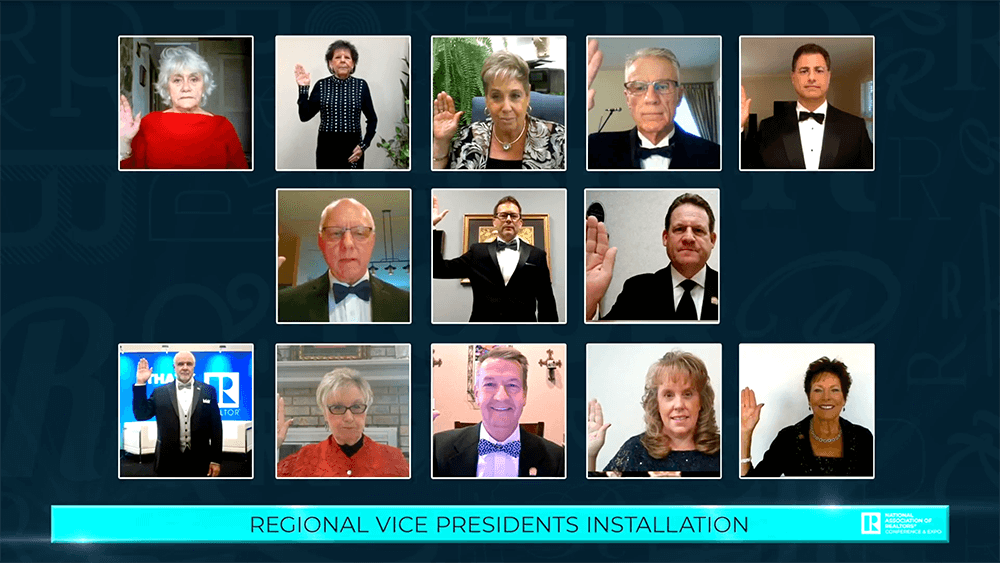
Before the NAR Conference & Expo officially kicked off, the organization conducted 170 individual online gatherings, including the Board of Directors meeting with more than 1,000 directors.
Digital Choreography for More Than 1,000 Directors
While the NAR Conference & Expo officially kicked off on Nov. 16, by that time, the organization had already run a few digital marathons, hosting two weeks’ worth of governance meetings. The pre-conference timeframe included 170 individual online gatherings of investor councils, committee meetings, and idea exchanges. The most important activity, though, was the Board of Directors meeting, which includes more than 1,000 directors.
“In the physical world, this is done by a very well-choreographed system of up to 10 numbered standing microphones in the audience of a ballroom,” Joe Faulder, director of creative and strategy at Projection, said. “Virtually, the technology needed to be planned and executed to simulate the in-person experience.”
That’s no easy task, particularly due to the fact that livestreams are typically delayed by 15-45 seconds, according to Faulder. To avoid those challenges, they used Zoom webinar to make sure that hearing and voting could happen in real-time. Preparing for the event felt less like gearing up for a meeting and more like getting ready for a Broadway production. “The event is heavily scripted,” Faulder said, “down to who needs to appear on screen when.”
There were even dress rehearsals: two-hour-long sessions scheduled to run just like the meeting. In addition to verifying that the technology worked, those sessions helped the directors understand the procedure for speaking and the process for elevating from regular viewing attendees to active panelists. The planning was a heavy lift with weekly planning calls for 10 weeks and a big staffing commitment of seven individuals handling a range of responsibilities.
It paid off, though, Faulder said. “The end result was a seamless Zoom webinar delivered with a high level of production value,” he said, “and absolutely zero friction for around 1,000 directors to be able to vote, discuss, and be heard.”
David McMillin is a former Convene associate editor and a freelance writer based in Chicago.
